|
Home » Audio » Speaker » The Subwoofer thing
| Re: Speaker placement [message #18687 is a reply to message #18686] |
Thu, 30 March 2006 09:53   |
 Earl Geddes
Earl Geddes
Messages: 220
Registered: May 2009
|
Master |
|
|
|
You still don't get it do you!!?? I use bandpass subs with a 100 Hz ACOUSTIC low pass in addition to the electrical LP that is in the amps. There is NOTHING of significance above about 100 Hz. Quit trying to top me on everything I say - I think that I know what I'm doing. If you don't agree with what I'm doing thats fine, but don't agree to what I actually say and what I am actually doing, not something stupid that you seem to imagine me doing. And my room is very well damped at these frequencies to boot. There are no distinctly measureable modes. You talk to me like I'm an amatuer who's guessing at what might sound good - and your going to set me straight. I've studied this problem in intensive detail for about 30 years - I hope that I've learned something along the way.
|
|
|
|
| Re: Speaker placement [message #18688 is a reply to message #18687] |
Thu, 30 March 2006 10:14   |
 |
 Wayne Parham
Wayne Parham
Messages: 18678
Registered: January 2001
|
Illuminati (33rd Degree) |
|
|
I certainly don't see you as an amateur. But you did mention using your subs up to 120Hz in this thread, and I've seen you suggest using them up to 150Hz or so in other threads. To me, that's a problem if the subs are far away but not if they're fairly close. That's my point. You can blend woofers nicely up to 150Hz or higher, as long as they're close. It's like a short line array, which smoothes the midbass in the same way distributed subs do. But I think we'd both agree distant subs should be crossed lower than that.The only other way I could interpret your comments is that you suggest blending subs only up to 100Hz, in which case modes above that point cannot benefit from smoothing via dense interference. In that case, I say the same thing. A couple of sound sources spaced a few feet away from one another and overlapped in the midbass, up to the Schroeder frequency, will help smooth the modes without any localization problems. They're far enough apart to provide smoothing but close enough together to sound like one acoustic source. What I visualize is a sort of purposely "unfocused" sound field in the modal region that gradually transitions to a focused uniformly directional point source around the Schroeder frequency. I'm using the word "unfocused" in only an illustrative sense, because what I really mean is distributed sound sources at low frequency that gradually become less distributed as frequency rises, becoming a point source at or about the Schroeder frequency. I think what I'm describing does this perfectly, because it addresses modal behavior at very low frequencies as well as higher up, where there are competing priorities of modal smoothing and preventing localization of the subs. The way this is done is by using relatively closely-spaced overlapping woofers to blend just under the Schroeder frequency and subs placed further away using lower crossover points.
|
|
|
|
|
|
|
|
| Room modes, multisubs and flanking subs [message #66914 is a reply to message #18952] |
Tue, 05 April 2011 15:24   |
 |
 Wayne Parham
Wayne Parham
Messages: 18678
Registered: January 2001
|
Illuminati (33rd Degree) |
|
|
When I first considered the multisub approach, it was prompted by papers written by Todd Welti. He did several tests that showed in-room amplitude response could be made smoother using multiple subs, and gave specific guidance about placement. His favored locations for subwoofers in a rectangular room were to use a sub at each wall midpoint (four subs total), a sub at each room corner (four subs total) or a sub at opposite wall midpoints (two subs total). The idea is to counter self-interference from boundary reflections in the modal region using multiple sources to smooth the sound field. Where one sub and its reflection cancel each other out, another sub in a different location can fill it in.
I discussed this with Earl Geddes at the 2005 Great Plains Audiofest (later renamed the Lone Star Audiofest) and he proposed an alternate configuration, one that puts subs in a random or semi-random arrangement. His idea is that the statistical deviation throughout the room will be averaged better by decorrelation. It makes some sense mathematically, and common sense tell you that if you want to average everything, a random distribution might do that better than an ordered distribution. After all, the room dimensions and the reflections from them are periodic, so the best thing to do to break this up is to introduce a randomizing element. That's the Geddes idea, in a nutshell.
The problem with both approaches is they work best in the lower modal range, up to about 100Hz or so. This is because the average room size separates the woofer locations by wavelength scale at these frequencies. Spreading woofers around the room puts them tens of feet apart, and on a wavelength scale, this tends to smooth frequencies up to about 100Hz.
However, there remains about an octave of the modal range that isn't effectively mitigated by this approach. Room modes extend up to the Schroeder frequency, which is the approximate frequency where modes are no longer distinct and become more of an averaged field. The Schroeder frequency is a function of room dimensions, and is usually between 150Hz and 200Hz for most average home listening rooms. Similarly, there are also self-interference notches that can form in this range from the nearest boundaries, usually the floor, the ceiling and the wall behind the speakers. Each of these types of self-interference can (and usually do) create notches in the response between 100Hz and 200Hz, if not mitigated in some manner.
My proposed solution is to use blended local sources up to somewhere in the vicinity of 150Hz to 200Hz. This can be accomplished with dual woofers, blended mid/woofer or flanking subs. In any case, the blending of the two sources should not need to be run higher than the Schroeder frequency. A pair of woofers in the same cabinet, for example, may have a lower "helper" woofer low-passed at 250Hz. Or a midrange/fullrange driver placed high on a baffle might be run down to 100Hz, blended with a woofer that is low-passed at 200Hz. Another possible solution, attractive with stand-mounted two-way speakers, is to run flanking subwoofers placed a couple feet away, run up to maybe 150Hz.
Geddes made the comment, a few posts back in this thread, that this is a "non-Welti, or Geddes, a sort of Parham arrangement". I suppose that's true, that flanking subs aren't specifically described by Welti or Geddes. However, some Welti configurations can be done this way. So while there are no Geddes configurations that implicitly include flanking subs, there are some Welti configurations that can.
Since Welti configurations are symmetrical, mains can be placed near the subs. For example, if subs are placed in or near each corner of the room, and stereo mains are placed near two of them, then the nearby subs are essentially flanking subs. With the right spacing and crossover (blending), the whole modal range can be made smooth, including mitigation of the nearest wall and floor bounce notches.
But this should not be taken to mean that flanking subs can only be used with Welti configurations. The mains can be setup with flanking subs, and then another one or two can be placed further away, located symmetrically as per Welti or in a random location as Geddes describes.
There is a tendency by some people to overcomplicate this approach, whether you choose the Welti, Geddes or Parham methods. It can be seen as a statistical approach to averaging the sound field. It can be seen as dense interference, like rain drop ripples in a pool. Both are accurate ways to view the situation. But it can also be seen as simply filling in holes.
Where one subwoofer and its boundary reflection combine to cancel each other, another sub fills it in. If you only had one woofer in the room, and you were sitting in a position where a large notch formed at a specific frequency, then it basically is "off" for you at this point. It is making no sound, or very little. Add another subwoofer, put it in a different location, and the self-interference from source to boundary won't cancel because it is in a different location. The phase between source and reflection is different, so the cancellation notch is at a different frequency. The sound for you is "on" at this frequency, from this second source.
At frequencies where both subwoofers are "on" for you, where they are phased properly to combine constructively, you will hear the sound at a little louder volume. At frequencies where one sub is "on" and the other is "off" from a self-interference notch, the sound will be slightly reduced because only one subwoofer is "on". But it is not nearly as much a reduction as if there were complete cancellation, like the single subwoofer setup would produce. So what you get with multiple subs is a little bit of ripple, but not a series of huge notches like a single sub produces.
The same is true at lower midrange (100-150Hz) frequencies, except the distances and scale are smaller. These are usually the result of a vertical mode, higher in frequency because the ceiling height is the smallest room dimension. A second woofer or flanking sub placed a couple feet away can be used to fill in the low-mid notch. At the frequency where the midrange or midwoofer is "off" because of self-interference from a vertical mode, the second speaker, placed a little lower to the ground, is "on" because it is at a different height.
Of course, at these lower midrange frequencies, localization cues are starting to emerge so you do not want the blended low-mid speakers too far apart. But by using a blended pair of sources placed relatively close together, you can greatly reduce the lower midrange notch without introducing an odd localization shift.
|
|
|
|
| Re: Room modes, multisubs and flanking subs [message #67245 is a reply to message #66914] |
Wed, 27 April 2011 14:18   |
 |
 Wayne Parham
Wayne Parham
Messages: 18678
Registered: January 2001
|
Illuminati (33rd Degree) |
|
|
What sets the modal range apart from the reverberant range (also sometimes referred to as the statistical range) is the spacing between peaks and valleys. Up high, the interference is so dense it creates tightly spaced spikes. It looks like "grass" on a response chart and there really isn't any spectral imbalance - all frequencies are fairly equal. But down low, the peaks and valleys are widely spaced. A bass note progression through this range will become noticeably louder in the peaks and softer in the valleys. Vocals can sound throaty and congested, or thin and veiled, depending on where the modes fall in respect to vocalist's pitch. It is also very distinct on some musical instruments, especially piano.
To illustrate the kinds of response anomalies we're talking about in this thread, I've made a quick scan of the internet. It isn't hard to find examples. Notice the peaks and valleys below 200Hz.
Two different speakers, measured in the same room and at the same position:
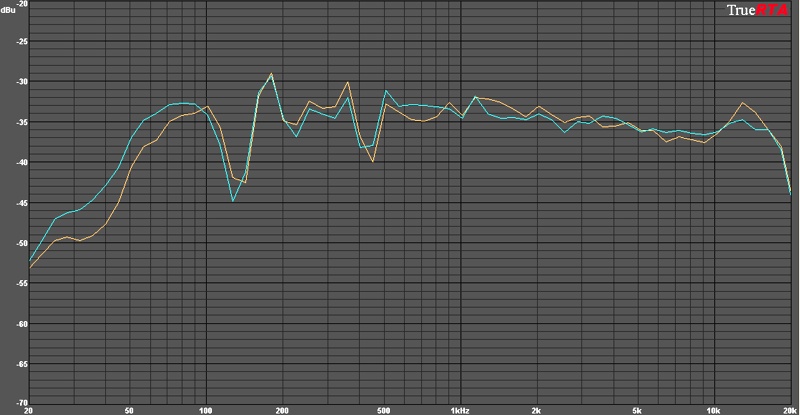
Another pair of dissimilar speakers, in the same room, at the same position:
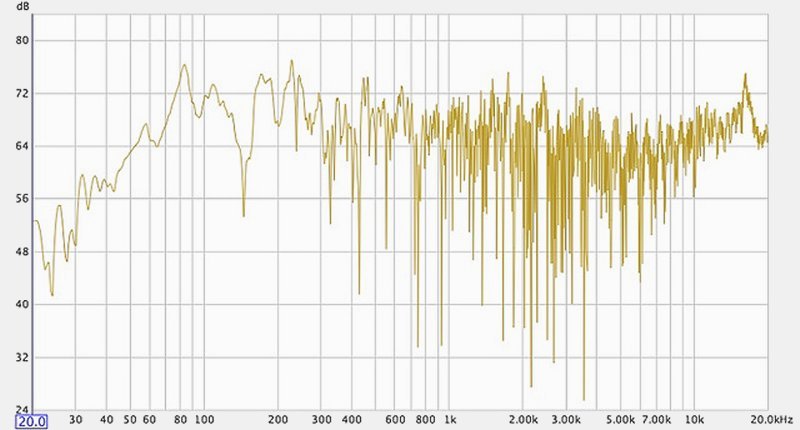
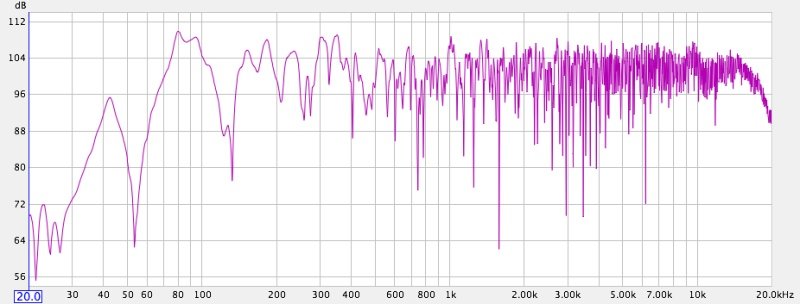
A mini-monitor on a stand, measured in-room:
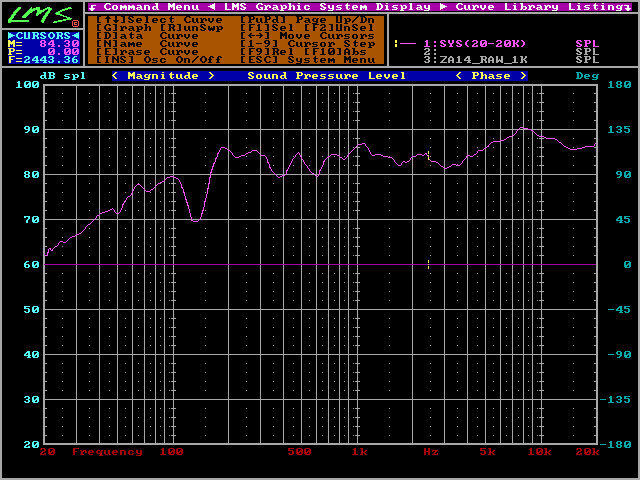
A pair of McIntosh speakers, measured indoors:
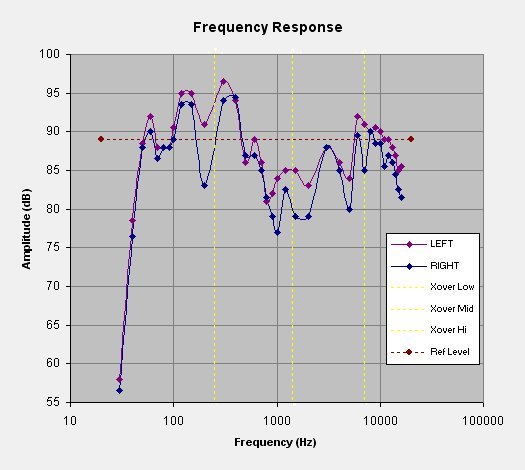
Charts from RealTraps.com, talking about room modes and boundary interference:

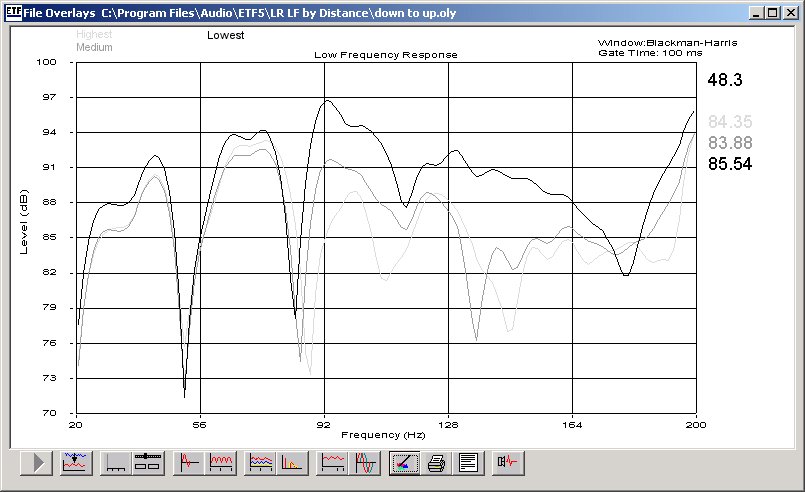
A pair of Danley SH-50 speakers, measured indoors (in Tom Danley's house):
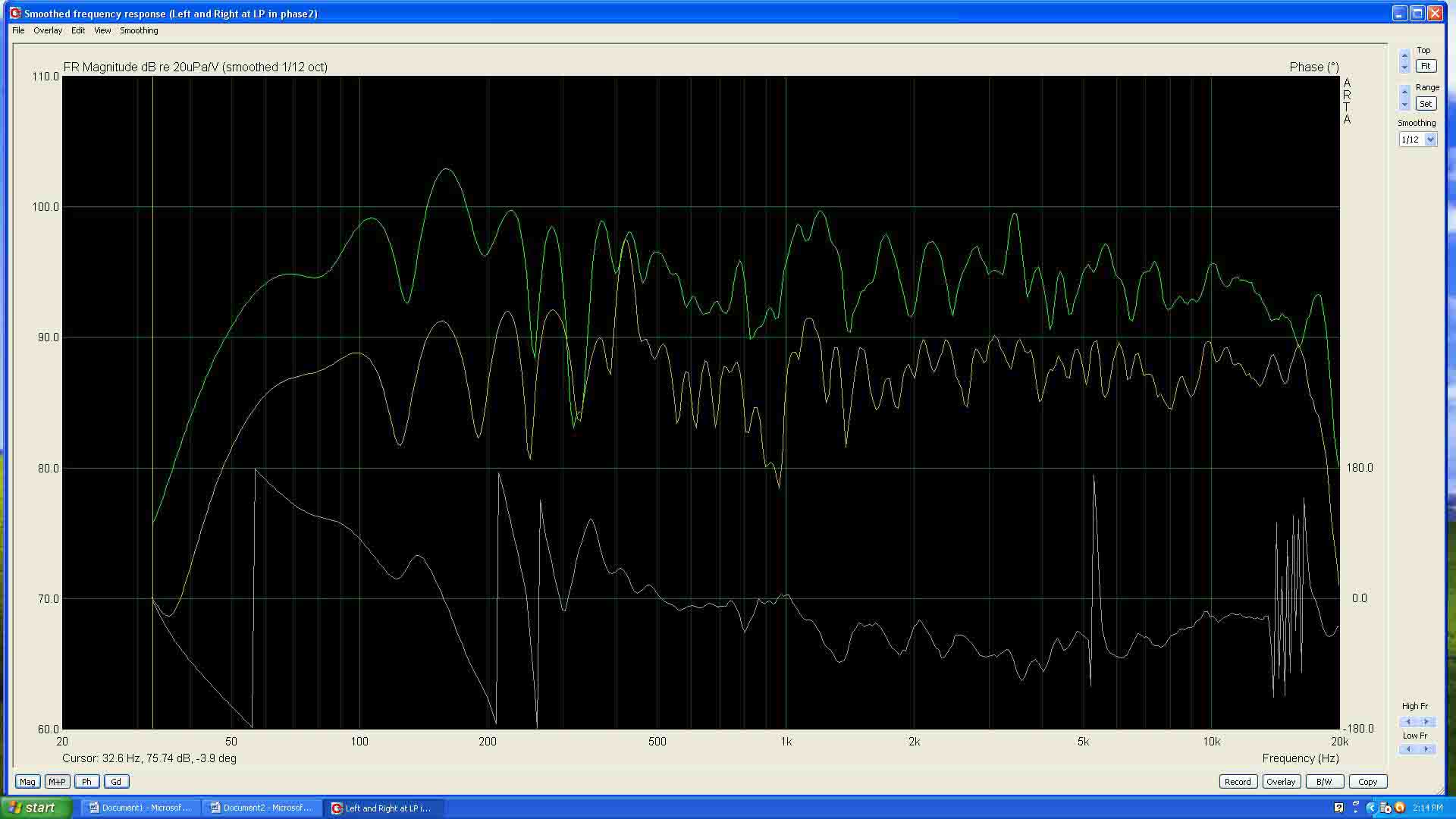
|
|
|
|
|
|
Goto Forum:
Current Time: Sat Apr 27 06:30:26 CDT 2024
|







